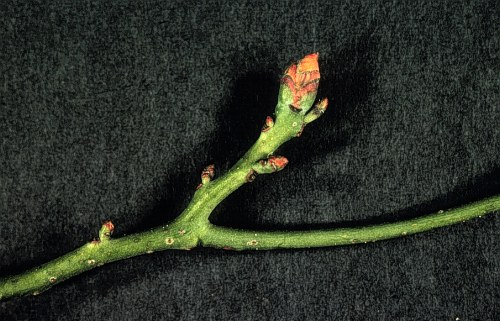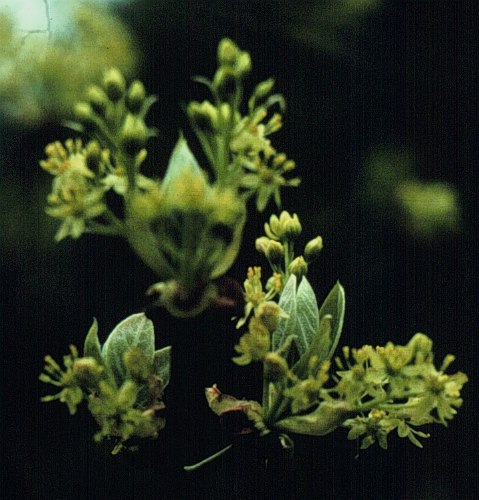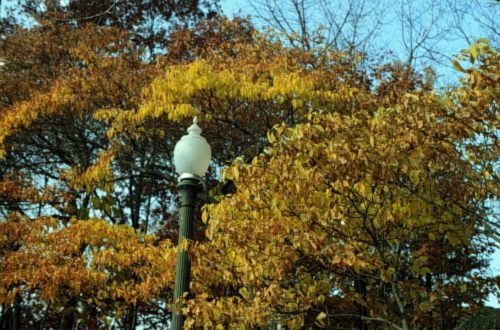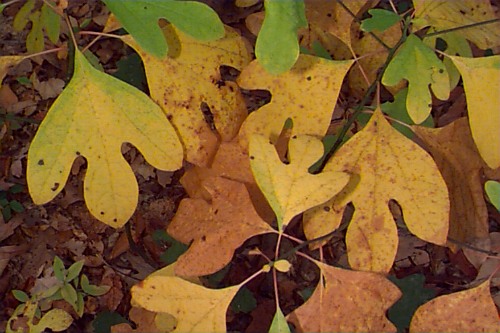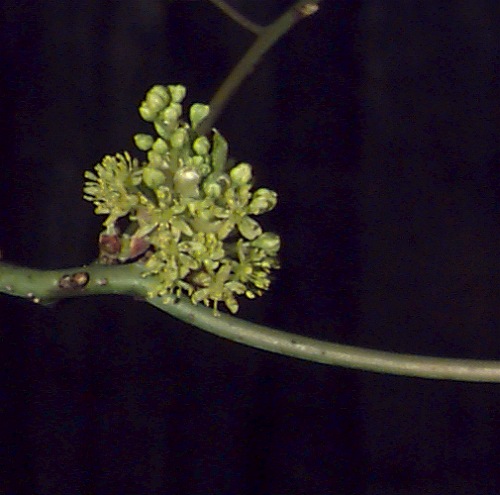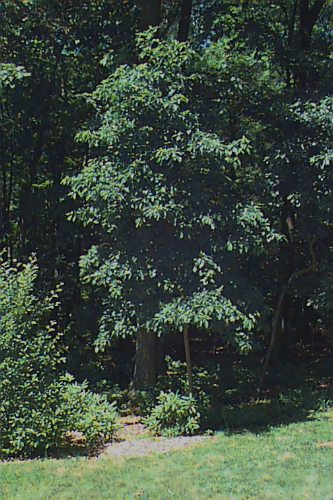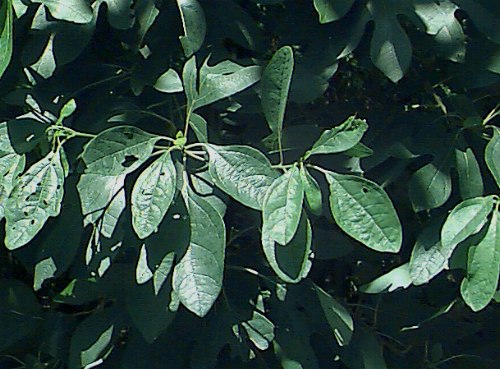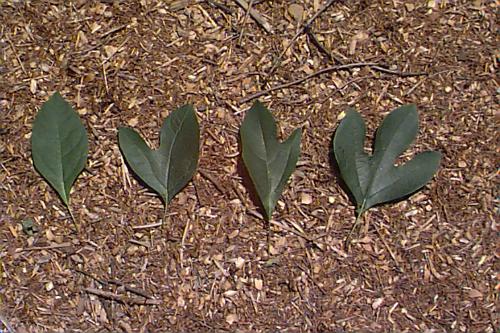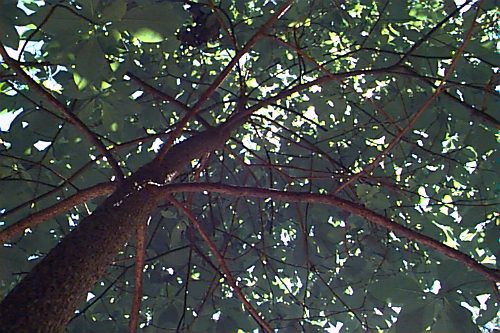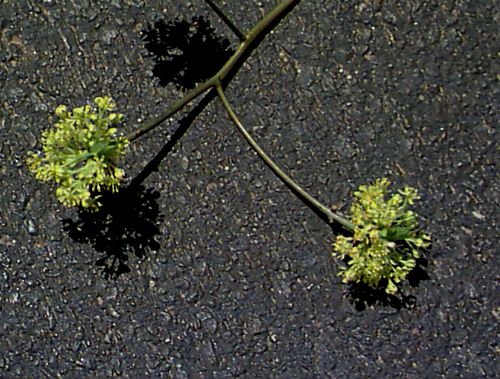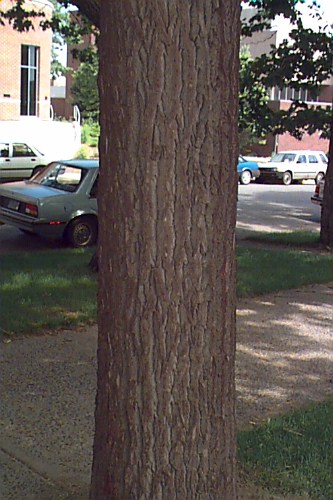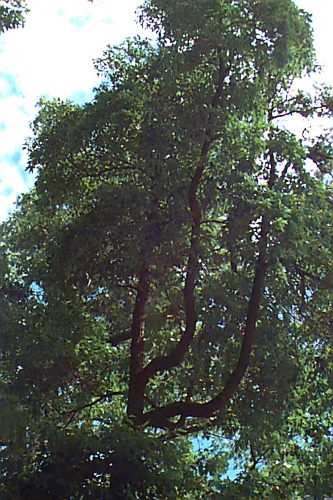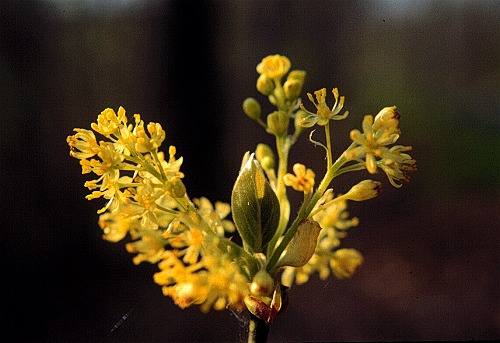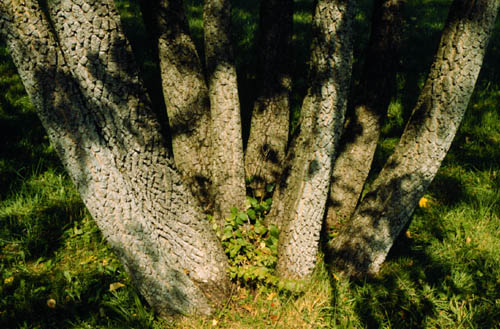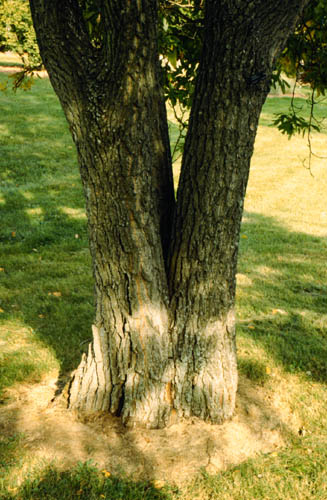Sassafras albidum
Common Sassafras
Lauraceae
ExpandHabitat
- native to eastern United States
- zone 5
Habit and Form
- a deciduous shrub or tree
- reaches 40' to 50' tall under some conditions
- pyramidal or shrubby when young
- rounded to irregular when older
- suckers from the roots and forms thickets
- branching is horizontal on young plants
- branching is more irregular on mature trees
Summer Foliage
- leaves in an alternate arrangement
- leaves are entire or shaped like mittens
- mittens can have left, right or two thumbs
- leaves are 3" to 7" long, 2" to 4" wide
- color is medium green
Autumn Foliage
- generally outstanding
- ranges from red to orange and yellow
Flowers
- dioecious; male and female plants
- yellow, before the leaves
- bloom tine is early may
- flower clusters about 2" long
- individual flowers are .4" in diameter
- limited ornamental impact
Fruit
- blue-black fruit on female plants only
- 0.5" long, held in clusters with red pedicels
- ripens in September
- fruit quickly eaten by birds or drop off, but red pedicels persist and can be showy
Bark
- ornamentally appealing
- deeply furrowed, forming flat, corky ridges
- red-brown color
- twig bark is smooth and green
Culture
- difficult to establish due to sparse root system
- prefers a light, acidic sandy soil
- full sun
- remove root suckers if a single trunk is desired
Landscape Use
- shade tree
- naturalistic areas
- desirable for fall foliage, showy bark and interesting branching
- can make sassafras tea from bark (possible carcinogen)
Liabilities
- chlorosis on high pH soils
- difficult to transplant and establish
- likely difficult to locate in commerce
- Japanese beetles
- propensity to sucker endlessly
ID Features
- mitten-shaped leaves when present
- sympodial branching
- green twig bark
- deeply furrowed mahogany bark
- red-orange-yellow fall color
Propagation
- root cuttings
- by seed
- difficult and this limits use of sassafras
Cultivars/Varieties
'Birch Mountain' - This unusual mutation features leaves that are marbled with irregular patterns of white variegation. It was discovered by Glastonbury, CT by Mark Sutcliffe recently and has not entered production yet. At best, it is probably a novelty for collectors.
